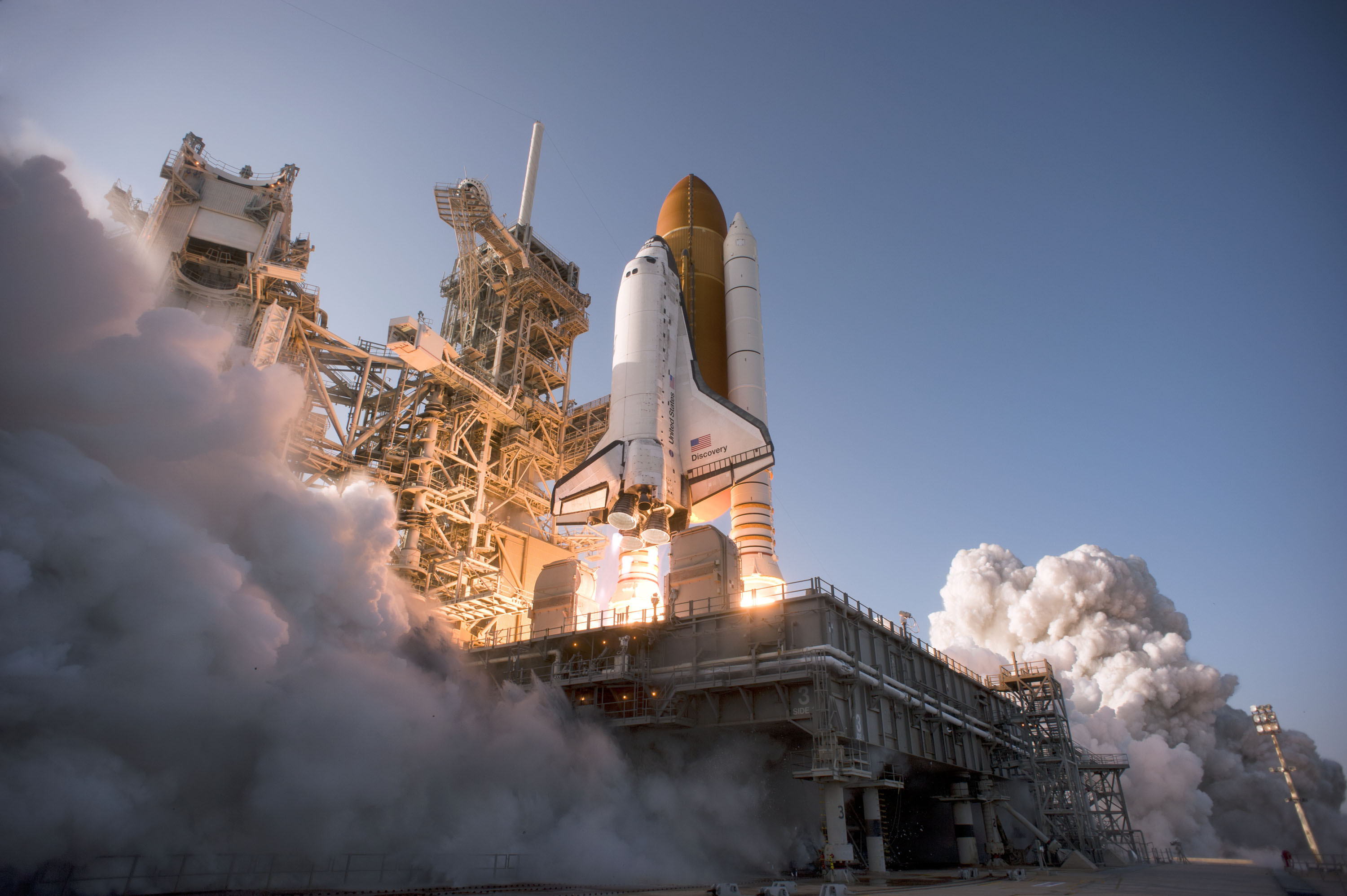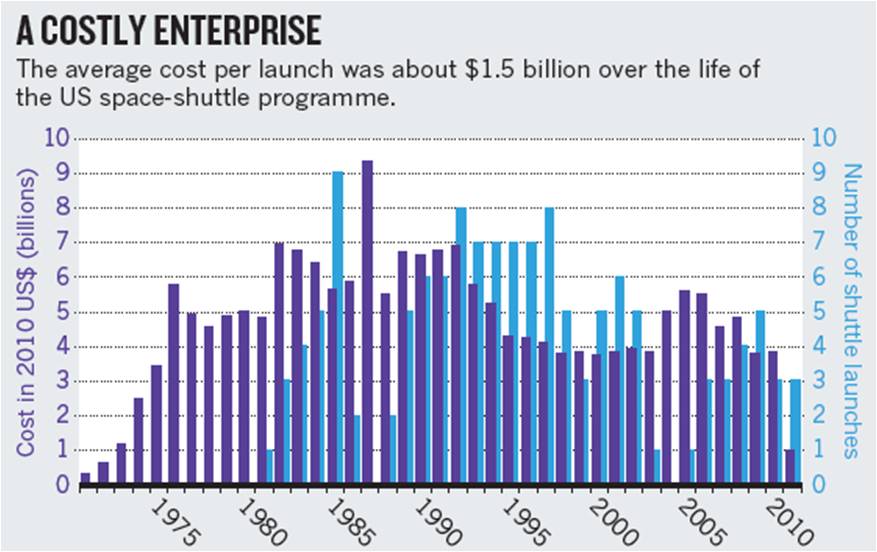Total Cost of NASA's Space Shuttle Program: Nearly $200 Billion

A final tally of the space shuttle program's lifetime costs puts the price tag at $1.5 billion per flight, a new analysis shows.
The analysis reveals that, as of the end of 2010, the space agency had spent more than $192 billion on the fleet since its inception in 1971, researchers said. That suggests that by the end of this year, which includes three more shuttle missions, NASA will have spent $196.5 billion on its storied space shuttle program.
On April 12, NASA will celebrate the 30th anniversary of the space shuttle program. But despite all of its accomplishments, it never came close to meeting its expectations.
The space shuttle was originally sold to Congress as a vehicle that could make spaceflight cheap and frequent, said Roger Pielke Jr., a science policy expert at the University of Colorado in Boulder who led the new analysis.
"Consider that it was originally expected to fly into space about once per week," Pielke told SPACE.com in an e-mail. "Its actual flight rate was one-tenth of that. It was never like an airliner."
The average cost per launch was about $1.2 billion (in 2010 dollars) during the shuttle's operational years from 1982 to 2010. But it rises to $1.5 billion per flight when factoring in lifetime program costs, according to the new analysis, which covered the 131 shuttle missions flown between 1982 and 2010. [Most Memorable Space Shuttle Missions]
NASA arguably flew the shuttle as often as it could, but always at great expense, Pielke said. NASA has launched 131 shuttle missions through 2010 and experienced two tragic disasters: the seven-astronaut crew of shuttle Challenger in 1986, and the seven-person crew of Columbia in 2003.
Get the Space.com Newsletter
Breaking space news, the latest updates on rocket launches, skywatching events and more!
NASA has scheduled the final two shuttle flights for later this year. The shuttle Endeavour will launch on the 134th shuttle flight on April 29, with the Atlantis orbiter pegged for a late June liftoff on the agency's final mission, STS-135.
That allowed Pielke and Radford Byerly, a research associate at the University of Colorado, to compare final costs with cost projections they had made 20 years ago, a time when the shuttle fleet was 10 years old. [Video: Space Shuttle's Maiden Launch]
The original shuttle fleet cost projections were based on just eight years of historical flight rates and costs. But that proved enough data for Pielke and Radford to come up with ballpark figures.

"By 1990, the shuttle had enough experience to conclude that flight rates were not going to increase by much and that annual costs would not go down by much," Pielke explained. [NASA's Space Shuttle: Top to Bottom]
Both the American public and policymakers should recognize that spaceflight programs represent a "risky, expensive and long-term commitment," Pielke said. He also emphasized the need to design programs with greater flexibility than the shuttle and station, so that the programs could evolve based on changing circumstances.
NASA likely knows those lessons already, Pielke said. The space agency has contracted commercial spaceflight provider SpaceX to deliver astronauts and supplies to the International Space Station.
Pielke and Byerly published their assessment in the correspondence section of the April 7 issue of the journal Nature.
Jeremy Hsu is a senior writer for InnovationNewsDaily, a sister site of SPACE.com. You can follow him on Twitter @ScienceHsu.
Join our Space Forums to keep talking space on the latest missions, night sky and more! And if you have a news tip, correction or comment, let us know at: community@space.com.
Jeremy Hsu is science writer based in New York City whose work has appeared in Scientific American, Discovery Magazine, Backchannel, Wired.com and IEEE Spectrum, among others. He joined the Space.com and Live Science teams in 2010 as a Senior Writer and is currently the Editor-in-Chief of Indicate Media. Jeremy studied history and sociology of science at the University of Pennsylvania, and earned a master's degree in journalism from the NYU Science, Health and Environmental Reporting Program. You can find Jeremy's latest project on Twitter.









